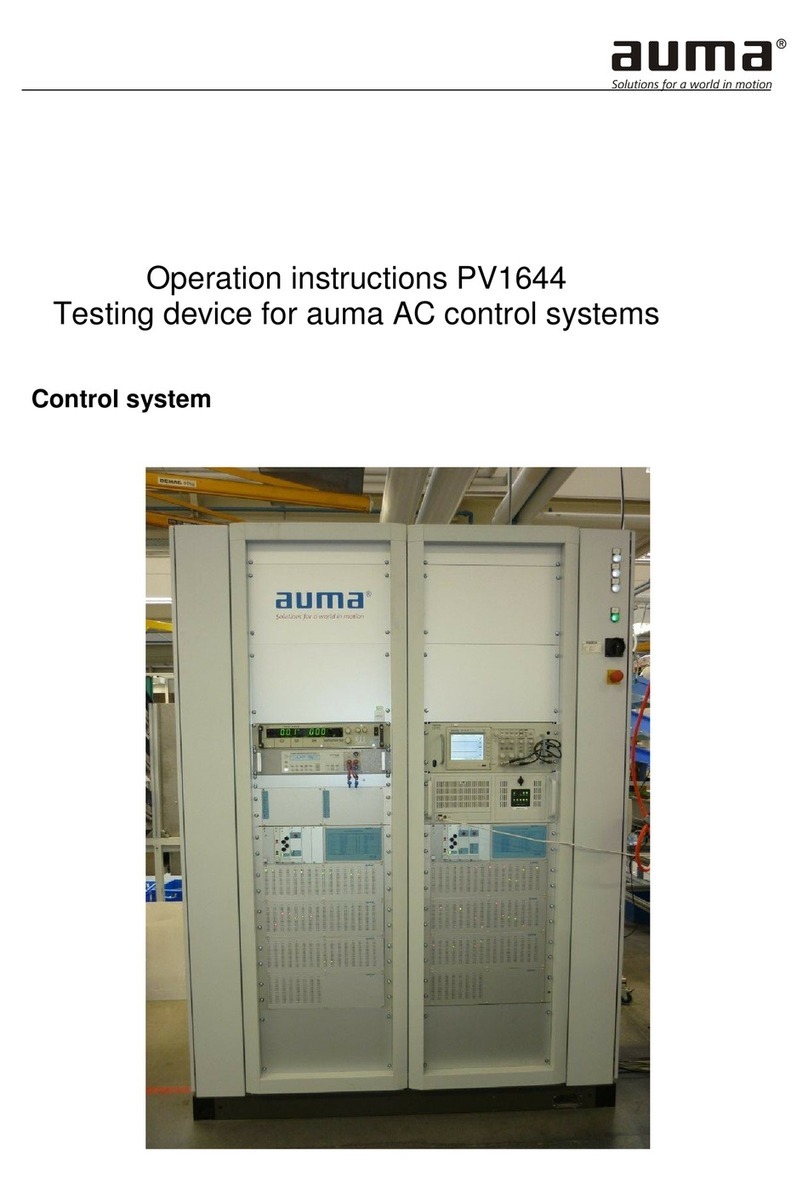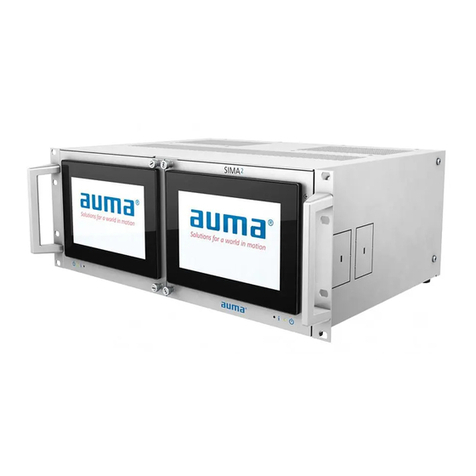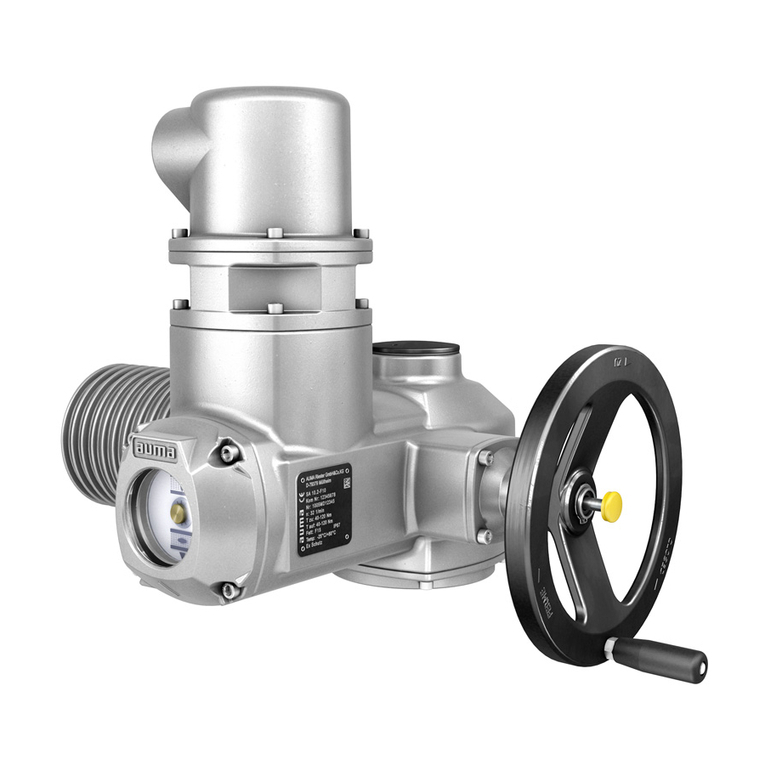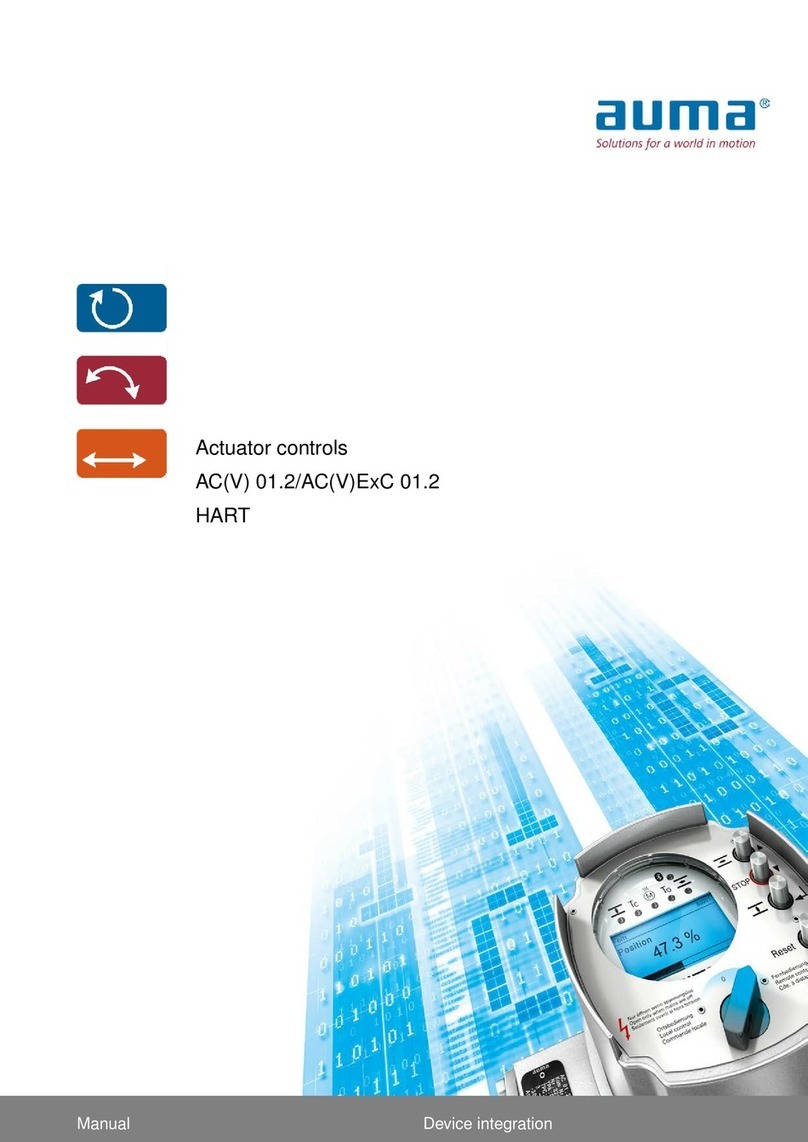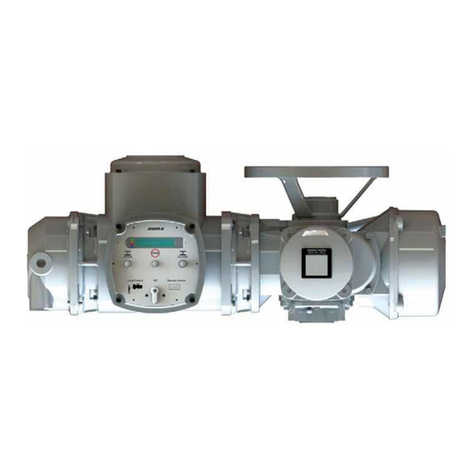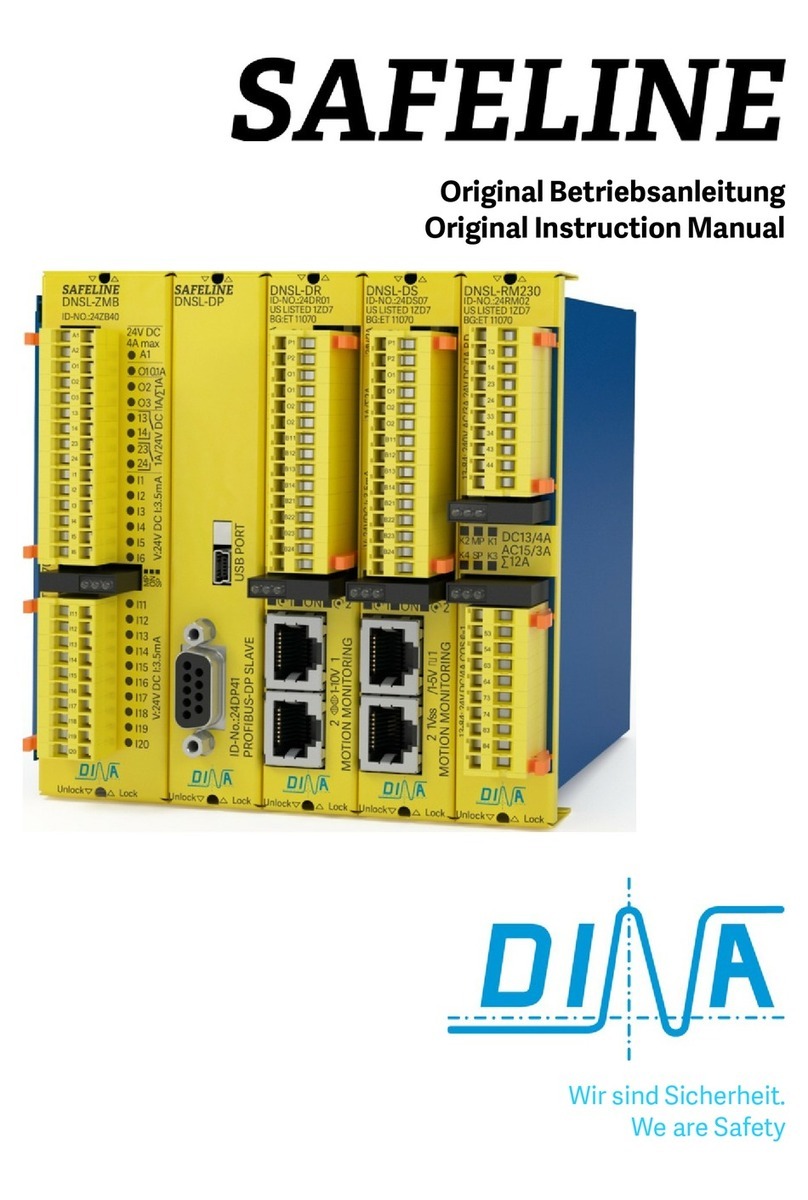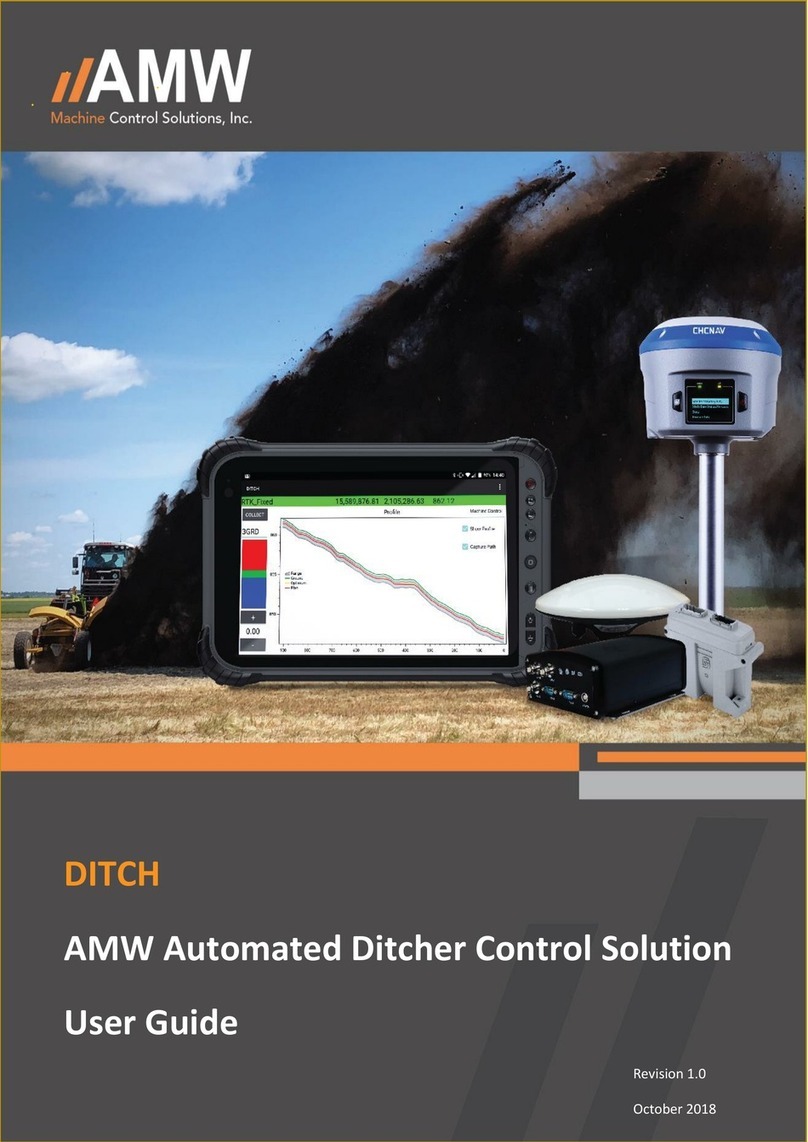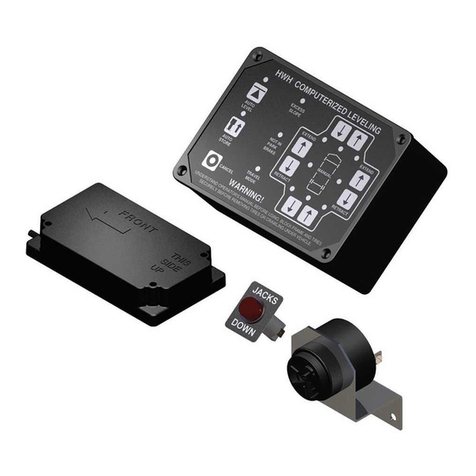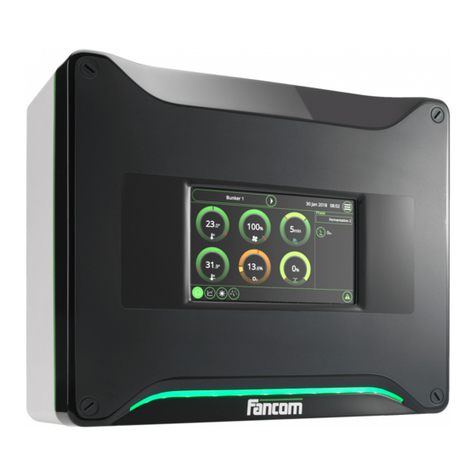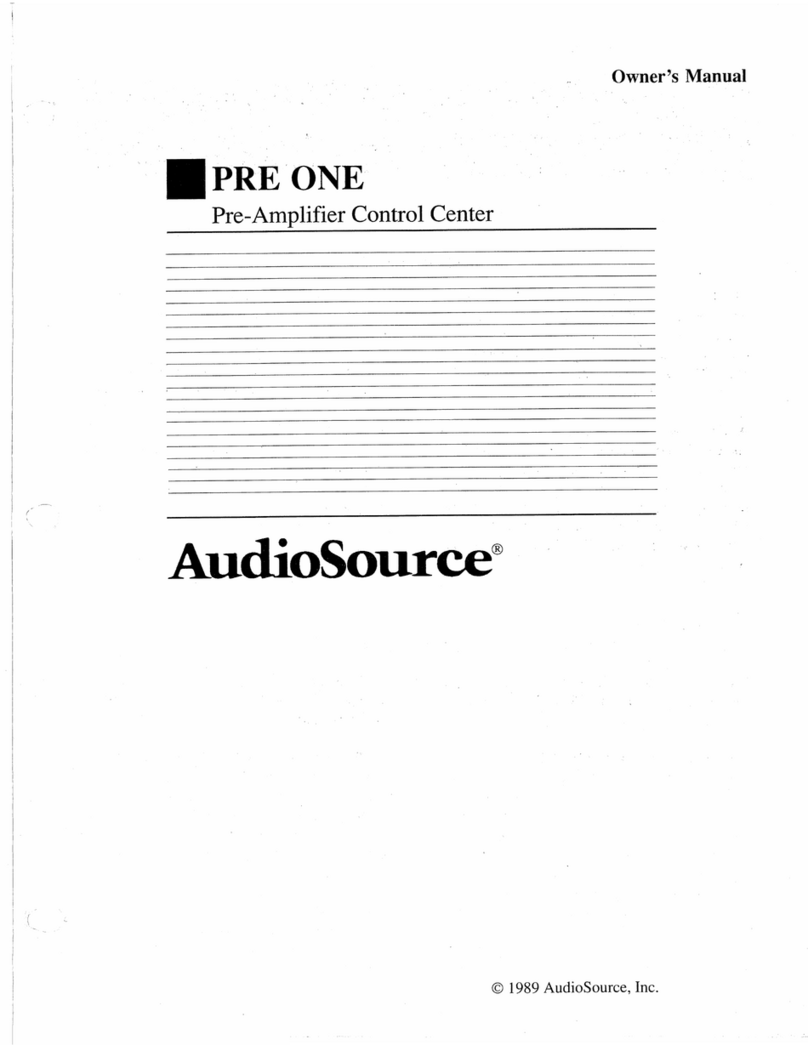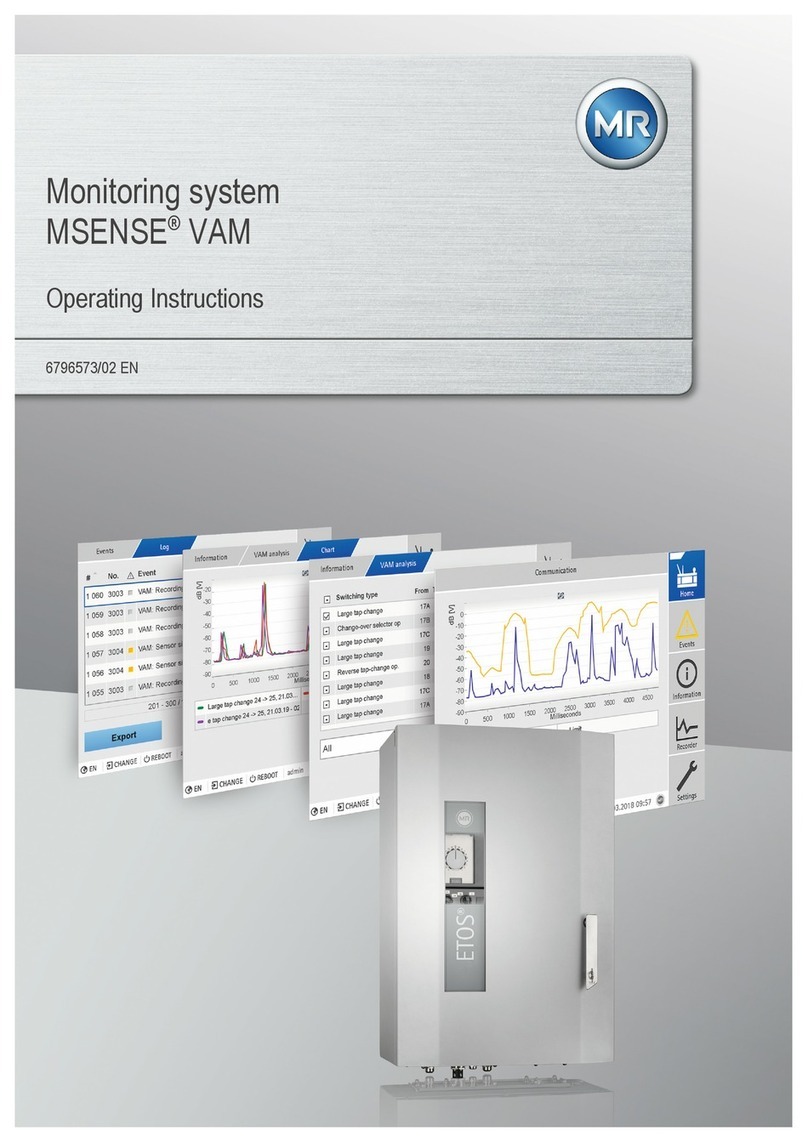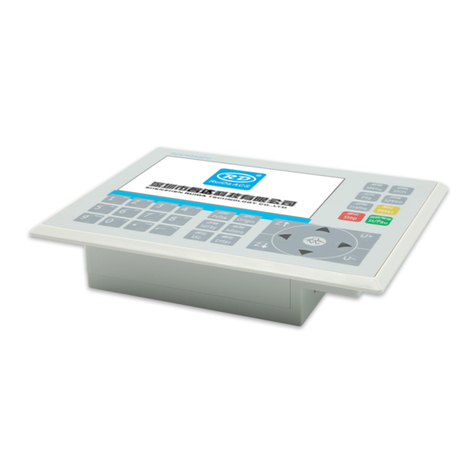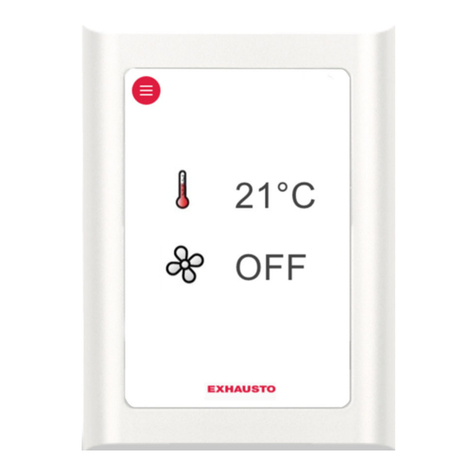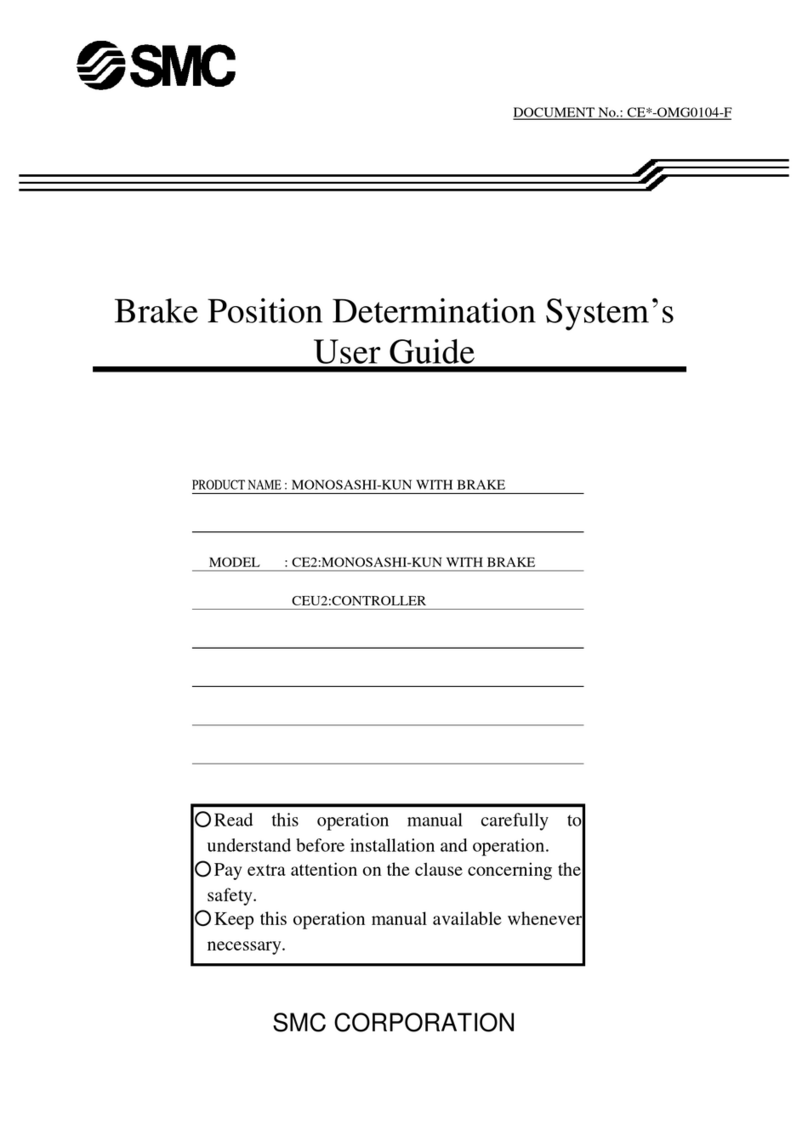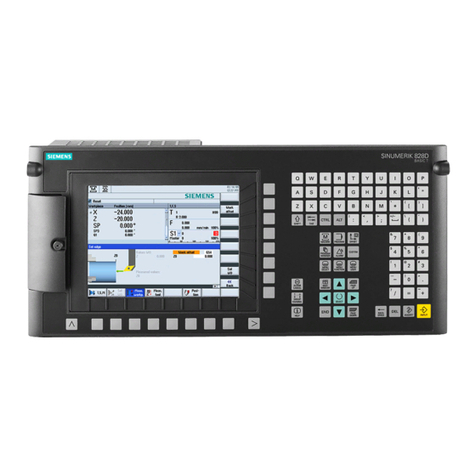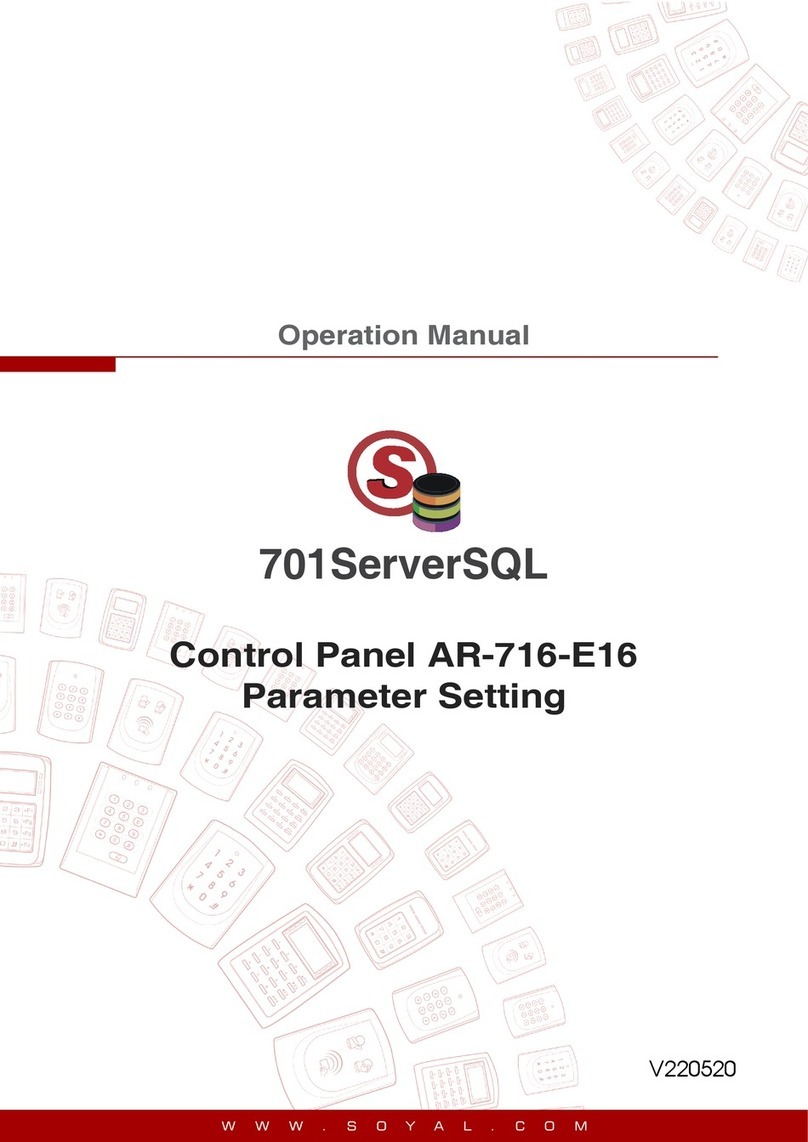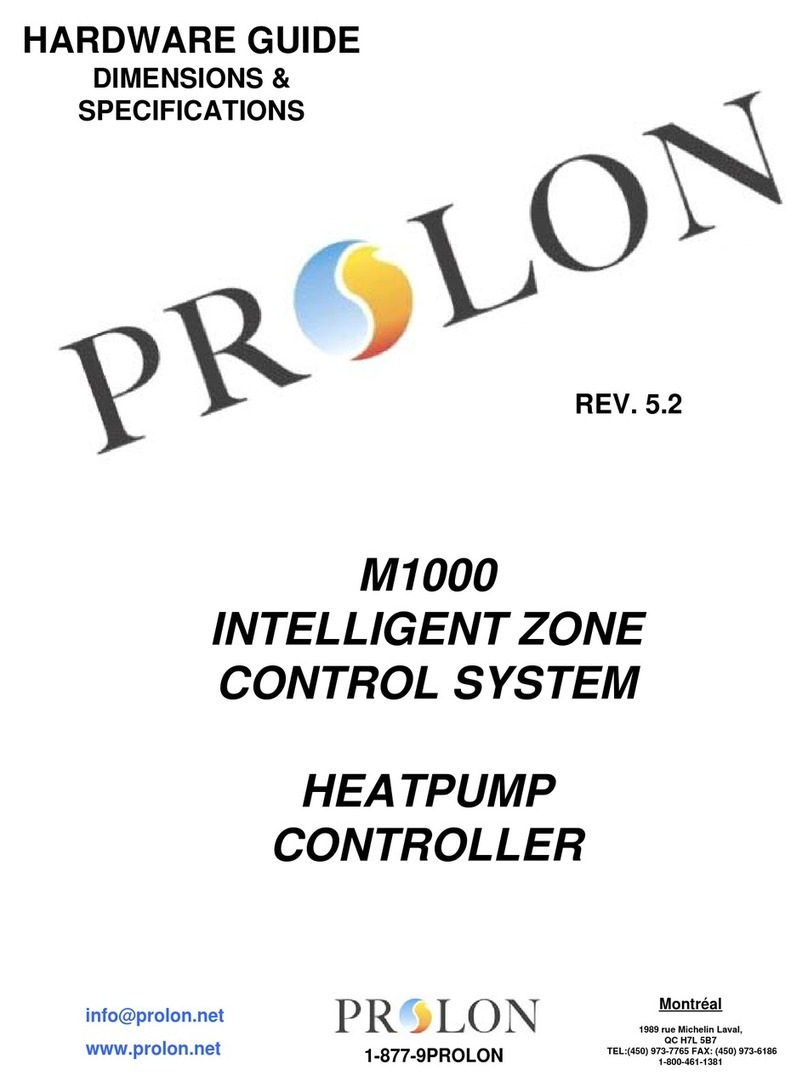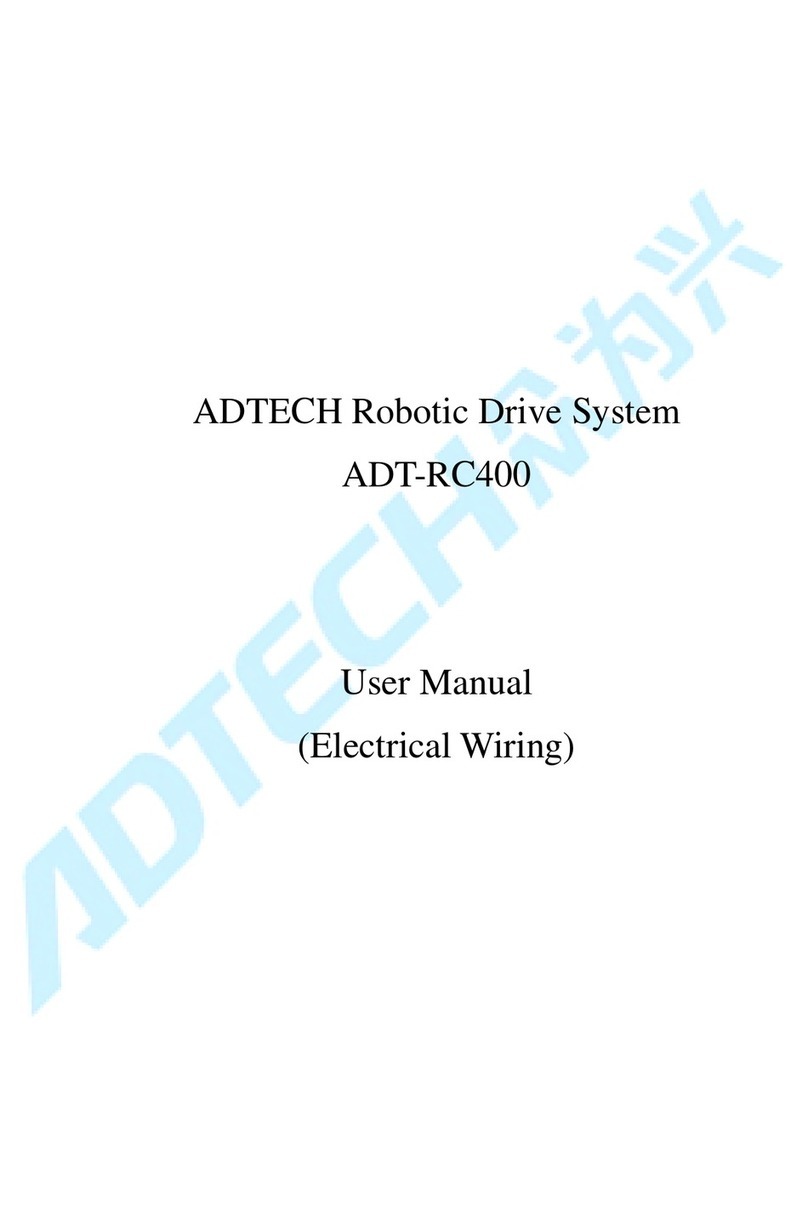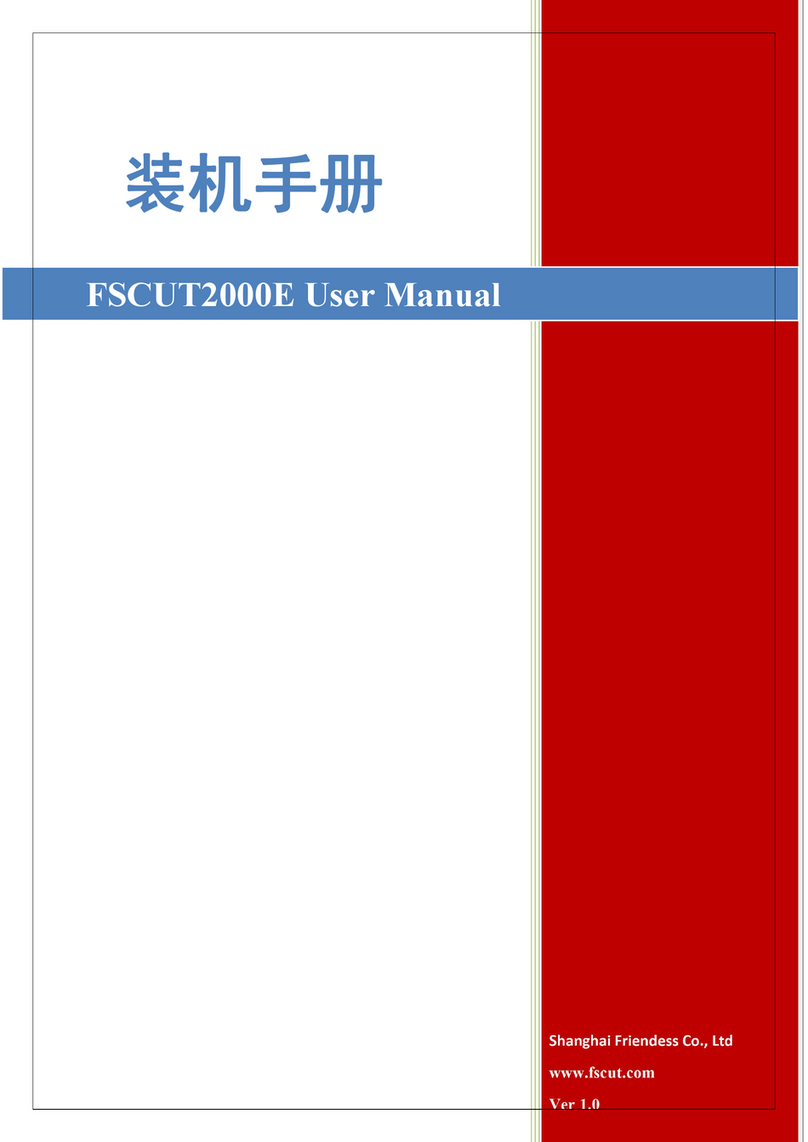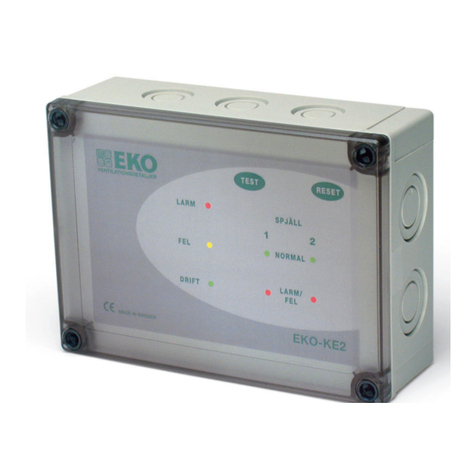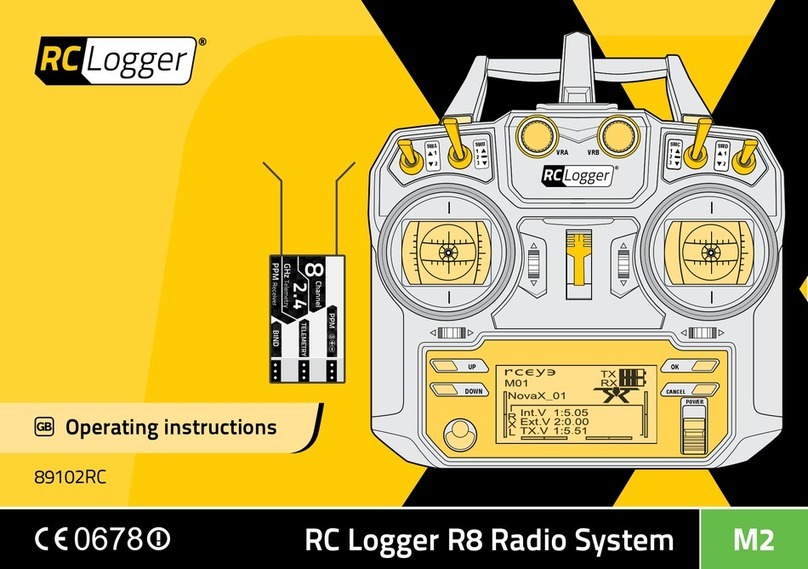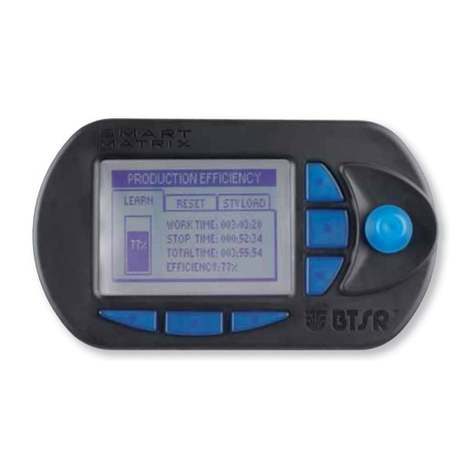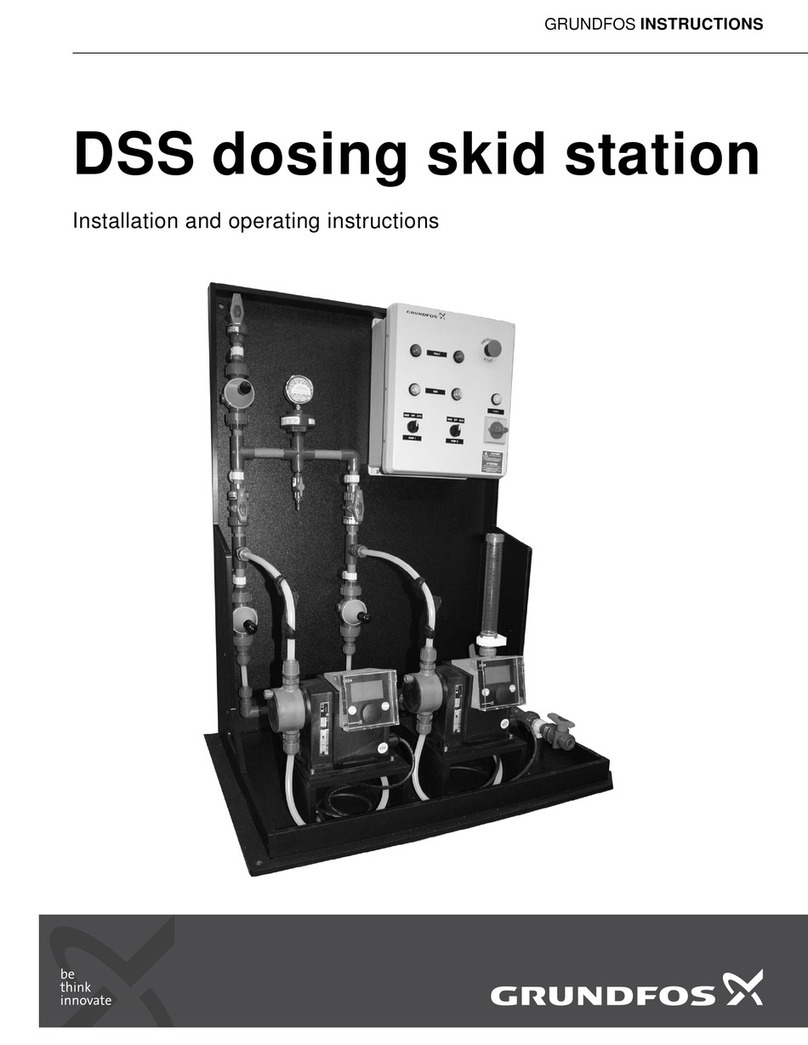AUMA ACV 01.2 User manual

Control
Parallel
→Profibus DP
Modbus RTU
Modbus TCP/IP
Profinet
Foundation Fieldbus
HART
Actuator controls
ACV 01.2/ACVExC 01.2
Operation and settingManual

Read operation instructions first.
●Observe safety instructions.
Purpose of the document:
This document contains information for the commissioning, operation and maintenance staff. It is intended to
support local device operation and setting modifications.
Reference documents:
●Operation instructions (Assembly, operation, commissioning) for actuator.
●Manual (Device integration Fieldbus) actuator controls AC 01.2 Profibus DP
Reference documents can be downloaded from the Internet (www.auma.com) or ordered directly from AUMA
(refer to <Addresses>).
Table of contents Page
91. Safety instructions................................................................................................................. 91.1. Prerequisites for the safe handling of the product 101.2. Range of application 101.3. Warnings and notes 101.4. References and symbols
122. Short description...................................................................................................................
133. Operation................................................................................................................................ 133.1. Operating the actuator from local controls 133.2. Actuator operation from remote 143.3. Menu navigation via push buttons (for settings and indications) 153.3.1. Menu layout and navigation 163.4. User level, password 163.4.1. Password entry 173.4.2. Password change 173.4.3. Timeout for incorrect password entry 183.5. Language in the display 183.5.1. Language change
194. Indications.............................................................................................................................. 194.1. Indications during commissioning 194.2. Indications in the display 204.2.1. Feedback signals from actuator and valve 224.2.2. Status indications according to AUMA classification 234.2.3. Status indications according to NAMUR recommendation 254.3. Indication lights of local controls 254.3.1. Indication lights: change colour
275. Signals (output signals)......................................................................................................... 275.1. Signals via fieldbus 275.2. Status signals via output contacts (digital outputs) 275.2.1. Assignment of outputs 275.2.2. Coding the outputs 285.3. Configurable status signals 285.4. Analogue signals (analogue outputs) 285.4.1. Assignment of analogue output 1
2
Actuator controls
Table of contents ACV 01.2/ACVExC 01.2 Profibus DP

295.4.2. Signal range of analogue output 1 305.4.3. Adjustment of analogue output 1 305.4.4. Assignment of analogue output 2 305.4.5. Signal range of analogue output 2 305.4.6. Adjustment of analogue output 2
326. Operation ............................................................................................................................... 326.1. Operation mode Off 326.2. Operation mode Local 326.2.1. Push-to-run operation or self-retaining Local 336.3. Operation mode remote 336.3.1. Push-to-run operation or self-retaining Remote 346.4. Operation mode EMERGENCY 346.5. Operation mode EMERGENCY stop 356.6. Operation mode Disabled 356.7. Operation mode Service
367. Basic settings for commissioning........................................................................................ 367.1. Type of seating for end positions 367.1.1. Type of seating: set 377.2. Torque switching 387.2.1. Torque switching: set 397.3. Limit switching 397.3.1. Limit switching: set 417.3.2. End position setting via stroke 447.4. Date and time 447.5. Display formats 447.5.1. Date format 457.5.2. Time format 457.5.3. Number format 457.5.4. Torque unit 457.5.5. Temperature unit 457.5.6. Position units 467.5.7. Process factor units 477.5.8. Analogue working value units (AIN) 477.5.9. Analogue signal output units (AOUT) 487.6. Contrast
498. Application functions............................................................................................................. 498.1. Speed functions 498.1.1. Speed source for local operation and remote operation 508.1.2. Speed for constant (internal) speed setpoint: set 518.1.3. Speed range for analogue input: set 518.1.4. Time for speed increase and time for speed reduction at pivot points 528.1.5. Speed reduction before reaching end positions OPEN/CLOSED (soft stop in end posi-
tions) 538.2. Speed profile 538.2.1. Speed profile: activate 548.2.2. Operation mode for speed profile: set 548.2.3. Pivot points for speed profile: define 568.3. Intermediate positions 578.3.1. Intermediate positions of pivot points: define
3
Actuator controls
ACV 01.2/ACVExC 01.2 Profibus DP Table of contents

578.3.2. Signal behaviour of intermediate positions: set 588.3.3. Hysteresis for intermediate positions: set 588.4. Operation profile (operation behaviour) for intermediate positions 598.4.1. Operation profile: activate 598.4.2. Operation profile for intermediate positions (pivot points): set 608.4.3. Off times for intermediate positions (pivot points):set 608.5. Two-wire control 608.6. Positioner (operation mode Remote SETPOINT) 618.6.1. Positioner: activate 618.6.2. Adaptive behaviour: activate deactivate 628.6.3. Overrun (inner dead band): set manually 628.6.4. Max. error variable (outer dead band): set manually 638.6.5. Dead time: set 638.6.6. Hysteresis for positioner: set 638.6.7. Closing fully/opening fully (end position tolerance for setpoint) 638.6.8. Setting range: limit 648.6.9. Speed reduction before reaching setpoint position 658.6.10. Change-over between OPEN - CLOSE control and setpoint control 668.6.11. Input of setpoint position 668.6.12. Input range of setpoint position 678.6.13. Split Range operation 678.7. Process controller 688.7.1. Process controller activation 698.7.2. Process controller: set modulating behaviour 708.7.3. Setpoint source (input for process setpoint) 708.7.4. Behaviour on loss of process setpoint 708.7.5. Inverse operation 708.7.6. Internal process setpoint 718.7.7. Setting procedure 718.7.8. Proportional gain Kp: set 718.7.9. Reset time Ti: set 718.7.10. Rate time Td: set 728.7.11. Actual value source (input for actual process value) 728.7.12. Speed source for actual process value 728.8. Stepping mode 738.8.1. Stepping mode: activate 738.8.2. Operation mode for stepping mode 748.8.3. Start and end of stepping mode 748.8.4. On times and off times 748.9. Profibus DP interface 748.9.1. Bus address (slave address) 758.9.2. Redundancy 758.9.3. Response telegrams for AUMA redundancy II 758.9.4. Connection type –compatibility with process representation 768.10. Additional inputs for fieldbus 768.11. Combination of fieldbus-parallel interface 778.12. Auto change-over I/O (during fieldbus failure) 788.13. Functions for FO cable connection 788.13.1. FO cable monitoring: activate/deactivate 788.13.2. FO cable topology:check setting
4
Actuator controls
Table of contents ACV 01.2/ACVExC 01.2 Profibus DP

788.13.3. FO cable baud rate, check setting 788.14. By-pass function 808.14.1. By-pass function: activate 808.14.2. By-pass application: configure 818.15. Automatic deblocking 818.15.1. Automatic deblocking function: activate 818.15.2. Operation time for operation in opposite direction: set 818.15.3. Number of deblocking attempts: set 828.15.4. Tolerance range: set 828.16. Heater system and heaters 828.16.1. Heater system within the actuator controls 828.16.2. Heater on control unit (actuator) 838.16.3. Motor heater
849. Failure functions.................................................................................................................... 849.1. Reversing prevention time 849.2. Failure behaviour on loss of signal 849.2.1. Failure reaction on loss of signal 859.2.2. Failure source (failure reason) for a failure operation: set 859.2.3. Failure operation (reaction of the actuator) on loss of signal 869.2.4. Preset position: define 869.2.5. Failure position MPV: define 869.2.6. Speed for safety operation: set 879.2.7. Delay time: set 879.3. EMERGENCY behaviour 889.3.1. EMERGENCY behaviour: activate 889.3.2. EMERGENCY failure reaction 899.3.3. Failure source (failure reason) for an EMERGENCY operation: set 899.3.4. Operation mode for EMERGENCY behaviour 899.3.5. EMERGENCY operation 899.3.6. EMERGENCY position 909.3.7. EMERGENCY speed 909.3.8. Torque switching: by-pass 909.3.9. Motor protection: by-pass 909.3.10. Stepping mode: by-pass 919.3.11. Operation profile: by-pass 919.3.12. Interlock: by-pass 919.3.13. Local stop: by-pass 919.3.14. Speed profile: by-pass 929.3.15. Delay time for EMERGENCY operation 929.4. Enable local controls 939.4.1. Enabling function: activate 939.4.2. Enabling function behaviour 939.5. Priority REMOTE 949.5.1. Priority REMOTE: activate 949.5.2. Priority REMOTE behaviour 959.5.3. Fieldbus auto enable 959.6. Interlock (enabling operation commands) 969.6.1. Interlock: activate 969.6.2. Source of Interlock enable signal:set 969.6.3. Operation mode for interlock
5
Actuator controls
ACV 01.2/ACVExC 01.2 Profibus DP Table of contents

969.6.4. Interlock behaviour (running direction) 979.7. Local Stop 979.7.1. Behaviour 979.8. EMERGENCY stop function 989.9. Partial Valve Stroke Test (PVST) 999.9.1. PVST activation 999.9.2. PVST source: set 1009.9.3. Operation mode for PVST 1009.9.4. Behaviour for PVST: define 1009.9.5. Partial stroke for PVST: set 1009.9.6. PVST monitoring time: set 1019.9.7. PVST operating time: set 1019.9.8. PVST reversing time: set 1019.9.9. PVST reminder 1019.9.10. Speed for PVST: set 1029.10. Bluetooth interface can be activated and deactivated
10510. Monitoring functions ............................................................................................................. 10510.1. Torque monitoring 10510.1.1. Torque by-pass 10610.1.2. Torque limitation of torque by-pass 10710.2. Motor protection monitoring (thermal monitoring) 10710.3. Type of duty monitoring (motor starts and running time) 10910.4. Operating time monitoring 10910.5. Reaction monitoring 11010.6. Motion detector 11010.6.1. Activate motion detector 11010.6.2. Detection time dt 11110.6.3. Travel difference dx 11110.6.4. Delay time 11110.7. Monitoring of electronics power supply 11210.8. Temperature monitoring 11210.9. Heater system/heater monitoring 11310.10. Verification of sub-assemblies 11310.11. Phase failure monitoring
11511. Functions: activate and enable............................................................................................. 11511.1. Functions: activate 11511.2. Functions: enable
11712. Product variants..................................................................................................................... 11712.1. Multiport valve 11712.1.1. Actuator type: set/check 11712.1.2. Gear reduction ratio: set/check 11812.1.3. Number of ports (positions) 11812.1.4. Home port (zero position):set 11912.1.5. Positions (of valve ports): define/check 11912.1.6. Operate to position via push buttons of the local controls 12112.1.7. Operate to position from Remote 12212.1.8. Dead band 12212.1.9. Correction of inertia 12212.1.10. Backlash compensation
6
Actuator controls
Table of contents ACV 01.2/ACVExC 01.2 Profibus DP

12212.1.11. Signalling behaviour of positions:set/check 12312.1.12. Hysteresis for signalling intermediate positions: set
12413. Service functions................................................................................................................... 12413.1. Direction of rotation 12413.2. Factory setting 12513.3. Languages: reload 12513.4. Data export 12513.5. Data import 12613.6. Actual configuration: accept 12613.7. Firmware update 12613.8. Service software
12814. Diagnostics............................................................................................................................. 12814.1. Electronic device ID 12814.2. Bluetooth connection diagnostic 12914.3. Diagnostic Interface 13014.4. Position transmitter and potentiometer diagnostic 13014.5. Diagnostic Position transmitter RWG 13114.6. Diagnostic Position transmitter MWG 13114.7. Diagnostic Positioner 13114.8. Diagnostic On time monitoring 13214.9. Diagnostic Process controller 13214.10. Profibus interface: diagnostics 13214.11. Diagnostic FO cable 13214.12. Simulation (inspection and test function) 13214.12.1. Actuator signals 13314.12.2. Interface signals
13415. Asset Management................................................................................................................. 13415.1. Operating data 13515.2. Event report 13615.3. Characteristics 13615.3.1. Torque-travel characteristic 13815.3.2. Position-time characteristic 13915.3.3. Temperature-time characteristic 13915.4. Histograms 13915.4.1. Motor running time-position (histogram) 14015.4.2. Motor running time-temperature (histogram) 14115.4.3. Motor running time-torque (histogram) 14115.5. Maintenance (information and signals) 14315.6. Operating times display 14315.7. Device temperature display
14416. Corrective action.................................................................................................................... 14416.1. Primary fuses 14416.2. Fault indications and warning indications
15117. Appendix................................................................................................................................. 15117.1. Selection overview for output contacts and indication lights (digital outputs DOUT) 15417.2. Selection list of binary signals for digital inputs (DIN)
7
Actuator controls
ACV 01.2/ACVExC 01.2 Profibus DP Table of contents

159Index........................................................................................................................................
163Parameter index.....................................................................................................................
8
Actuator controls
Table of contents ACV 01.2/ACVExC 01.2 Profibus DP

1. Safety instructions
1.1. Prerequisites for the safe handling of the product
Standards/directives The end user or the contractor must ensure that all legal requirements, directives,
guidelines, national regulations and recommendations with respect to assembly,
electrical connection, commissioning and operation are met at the place of installation.
They include among others:
●Standards and directives such as IEC 60079 “Explosive atmospheres":
- Part 14: Electrical installations design, selection and erection.
- Part 17: Electrical installations inspection and maintenance.
●Applicable configuration guidelines for fieldbus applications.
Safety instructions/
warnings All personnel working with this device must be familiar with the safety and warning
instructions in this manual and observe the instructions given. Safety instructions
and warning signs on the device must be observed to avoid personal injury or property
damage.
Qualification of staff Assembly, electrical connection, commissioning, operation, and maintenance must
be carried out by suitably qualified personnel authorised by the end user or contractor
of the plant only.
Prior to working on this product, the staff must have thoroughly read and understood
these instructions and, furthermore, know and observe officially recognised rules
regarding occupational health and safety.
Work performed in potentially explosive atmospheres is subject to special regulations
which have to be observed.The end user or contractor of the plant is responsible
for respect and control of these regulations, standards, and laws.
Electrostatic charging Highly efficient charge generating processes (processes more efficient than manual
friction) on the device surface must be excluded at any time, since they will lead to
propagating brush discharges and therefore to ignition of a potentially explosive
atmosphere.
This also applies to fireproof coatings or covers available as an option.
Ignition dangers Gearboxes were subjected to an ignition hazard assessment in compliance with the
currently applicable standard according to ISO 80079-36/ -37.Hot surfaces,
mechanically generated sparks as well as static electricity and stray electric currents
were identified and assessed as major potential ignition sources.Protective measures
to prevent the likelihood that ignition sources arise were applied to the gearboxes.
This includes in particular lubrication of the gearbox, the IP protection codes and the
warnings and notes contained in these operation instructions.
Commissioning Prior to commissioning, imperatively check that all settings meet the requirements
of the application. Incorrect settings might present a danger to the application, e.g.
cause damage to the valve or the installation.The manufacturer will not be held
liable for any consequential damage. Such risk lies entirely with the user.
Operation Prerequisites for safe and smooth operation:
●Correct transport, proper storage, mounting and installation, as well as careful
commissioning.
●Only operate the device if it is in perfect condition while observing these instruc-
tions.
●Immediately report any faults and damage and allow for corrective measures.
●Observe recognised rules for occupational health and safety.
●Observe national regulations.
●During operation,thehousingwarms upand surfacetemperatures> 60 °C may
occur.To prevent possible burns, we recommend checking the surface temper-
ature prior to working on the device using an appropriate thermometer and
wearing protective gloves.
9
Actuator controls
ACV 01.2/ACVExC 01.2 Profibus DP Safety instructions

Protective measures The end user or the contractor are responsible for implementing required protective
measures on site, such as enclosures, barriers, or personal protective equipment
for the staff.
Maintenance To ensure safe device operation, the maintenance instructions included in this manual
must be observed.
Any device modification requires prior written consent of the manufacturer.
1.2. Range of application
AUMA actuator controls are exclusively designed for the operation of AUMA actuators.
Other applications require explicit (written) confirmation by the manufacturer.The
following applications are not permitted, e.g.:
●motor control
●pump control
No liability can be assumed for inappropriate or unintended use.
Observance of these operation instructions is considered as part of the device's
designated use.
1.3. Warnings and notes
The following warnings draw special attention to safety-relevant procedures in these
operation instructions, each marked by the appropriate signal word (DANGER,
WARNING, CAUTION, NOTICE).
Indicates an imminently hazardous situation with a high level of risk. Failure
to observe this warning results in death or serious injury.
Indicates a potentially hazardous situation with a medium level of risk.Failure
to observe this warning could result in death or serious injury.
Indicates a potentially hazardous situation with a low level of risk. Failure to
observe this warning could result in minor or moderate injury. May also be
used with property damage.
Potentially hazardous situation. Failure to observe this warning could result
in property damage. Is not used for personal injury.
Safety alert symbol warns of a potential personal injury hazard.
The signal word (here: DANGER) indicates the level of hazard.
1.4. References and symbols
The following references and symbols are used in these instructions:
Information The term Information preceding the text indicates important notes and information.
Symbol for CLOSED (valve closed)
Symbol for OPEN (valve open)
Via the menu to parameter
Describes the menu path to the parameter.When using the push buttons of local
controls, the required parameter can be quickly found on the display.Display texts
are shaded in grey: Display.
10
Actuator controls
Safety instructions ACV 01.2/ACVExC 01.2 Profibus DP

➥Result of a process step
Describes the result of a preceding process step.
Warning signs at the device
The following warning signs can be attached to the device.
General warning sign
General warning of a danger zone.
Hot surface
Warning of hot surfaces, e.g.possibly caused by high ambient temperatures or strong
direct sunlight.
Electrical voltage
Hazardous voltage! Warning of electric shock. At some devices, the warning sign
additionally includes a time interval, e.g. 30 s. Once power supply is switched off,
you will have to wait for the indicated period. Only then may the device be opened.
11
Actuator controls
ACV 01.2/ACVExC 01.2 Profibus DP Safety instructions

2. Short description
Actuator controls ACV 01.2/ACVExC 01.2 actuator controls are used to operate AUMA actuators and
are supplied ready for use.
The functions of the actuator controls include standard valve control in OPEN-CLOSE
duty, positioning, process control, logging of operating data, diagnostic functions
right through control via various interfaces (e.g. Fieldbus, Ethernet and HART).
Local controls/
AUMA CDT Operation, setting, and display can be performed directly at the actuator controls or
alternatively from REMOTE via a fieldbus interface.
When set to local control, it is possible to
●operate the actuator via the local controls (push buttons and display) and perform
settings (contents of these instructions).
●read in or out data or modify and save settings via AUMA CDT software (ac-
cessory), using a computer (laptop or PC).The connection between computer
and actuator controls is wireless via Bluetooth interface (not included in these
instructions).
Intrusive - Non-Intrusive ●Intrusive version (control unit: electromechanical):
Limit and torque setting is performed via switches in the actuator.
●Non-Intrusive version (control unit: electronic):
Limit and torque setting is performed via the controls, without removal of actu-
ator or actuator controls covers.For this purpose, the actuator is equipped with
anMWG (magnetic limit and torquetransmitter),alsocapableto supply analogue
torque feedback signals/torque indication and analogue position feedback sig-
nals/position indication at the actuator controls output.
12
Actuator controls
Short description ACV 01.2/ACVExC 01.2 Profibus DP

3. Operation
3.1. Operating the actuator from local controls
Local actuator operation is performed using the local controls push buttons of actuator
controls.
Figure 1: Local controls
[1] Push button for operation command in direction OPEN
[2] Push button STOP
[3] Push button for operation command in direction CLOSE
[4] Push button RESET
[5] Selector switch
Hot surfaces, e.g. possibly caused by high ambient temperatures or strong
direct sunlight!
Risk of burns
→Verify surface temperature and wear protective gloves.
→Set selector switch [5] to position Local control (LOCAL).
➥The actuator can now be operated using the push buttons [1 –3]:
-Run actuator in direction OPEN: Press push button [1] .
- Stop actuator: Press push button STOP [2].
-Run actuator in direction CLOSE: Press push button [3] .
Information The OPEN and CLOSE operation commands can be given either in push-to-run or
in self-retaining operation mode.For further information, please refer to <Push-to-
run operation or self-retaining local> chapter.
3.2. Actuator operation from remote
Risk of immediate actuator operation when switching on!
Risk of personal injuries or damage to the valve
→If the actuator starts unexpectedly:Immediately turn selector switch to 0(OFF).
→Check input signals and functions.
13
Actuator controls
ACV 01.2/ACVExC 01.2 Profibus DP Operation

→Set selector switch to position Remote control (REMOTE).
➥Now, the actuator can be remote-controlled via fieldbus.
Information For actuators equipped with a positioner, it is possible to change over between OPEN
- CLOSE control (Remote OPEN-CLOSE) and setpoint control (Remote SET-
POINT). For further information, refer to chapter <Change-over between OPEN -
CLOSE control and setpoint control>.
Information For actuators equipped with a positioner, it is possible to change over between OPEN
- CLOSE control (Remote OPEN-CLOSE) and setpoint control (Remote SET-
POINT).For further information, please refer to the Manual (Operation and setting).
3.3. Menu navigation via push buttons (for settings and indications)
Menu navigation for display and setting is made via the push buttons [1 –4] of the
local controls.
Set the selector switch [5] to position 0(OFF) when navigating through the menu.
The bottom row of the display [6] serves as navigation support and explains which
push buttons [1 –4] are used for menu navigation.
Figure 2:
[1–4] Push buttons or navigation support
[5] Selector switch
[6] Display
Table 1: Important push button functions for menu navigation
FunctionsNavigation sup-
port on display
Push buttons
Change screen/selection
Up ▲
[1] Change values
Enter figures from 0 to 9
Change screen/selection
Down ▼
[2] Change values
Enter figures from 0 to 9
14
Actuator controls
Operation ACV 01.2/ACVExC 01.2 Profibus DP

FunctionsNavigation sup-
port on display
Push buttons
Confirm selection
Ok
[3] Save
Save
Enter <Edit> menu
Edit
Display more details
Details
Enter Main menu
Setup
[4] CCancel process
Esc
Return to previous display
Backlight ●The display is illuminated in white during normal operation. It is illuminated in
red in case of a fault.
●The screen illumination is brighter when operating a push button.If no push
button is operated for 60 seconds, the display will become dim again.
3.3.1. Menu layout and navigation
Groups The indications on the display are divided into 3 groups:
Figure 3: Groups
[1] Start menu
[2] Status menu
[3] Main menu
ID Status menu and main menu are marked with an ID.
Figure 4: Marking with ID
SID starts with S= status menu
MID starts with M= main menu
Group selection It is possible to select between status menu Sand main menu M:
For this, set selector switch to 0(OFF), hold down push button Cfor approx. 2
seconds until a screen containing the ID M... appears.
Figure 5: Select menu groups
You return to the status menu if:
●the push buttons on the local controls have not been operated within 10 minutes
●or by briefly pressing C
Direct display via ID When entering the ID within the main menu, screens can be displayed directly (without
clicking through).
15
Actuator controls
ACV 01.2/ACVExC 01.2 Profibus DP Operation

Figure 6: Direct display (example)
Display indicates in the bottom row: Go to
1. Press push button Go to.
Display indicates: Go to menu M0000
2. Use push buttons Up ▲ Down ▼ to select figures 0 to 9.
3. Press push button Ok to confirm first digit.
4. Repeat steps 2 and 3 for all further digits.
5. To cancel the process: Press CEsc.
3.4. User level, password
User level Theuser level defines which menu items or parameterscan bedisplayedormodified
by the active user.
There are 6 different user levels.The user level is indicated in the top row:
Figure 7: User level display (example)
Password A password must be entered to allow parameter modification.The display indicates:
Password 0***
A specific password is assigned to each user level and permits different actions.
Table 2:
User levels and authorisations
Authorisation/passwordDesignation (user level)
Verify settings
No password required
Observer (1)
Change settings
Default factory password:0000
Operator (2)
Reserved for future extensions
Maintenance (3)
Change device configuration
e.g.type of seating, assignment of output contacts
Default factory password:0000
Specialist (4)
Service staff
Change configuration settings
Service (5)
AUMA administrator
AUMA (6)
Unauthorised access is made easier due to insecure password!
→We urgently recommend changing the password during initial commissioning.
3.4.1. Password entry
1. Select desired menu and hold down push button for approx. 3 seconds.
➥Display indicates the set user level, e.g Observer (1)
2. Select higher user level via Up ▲ and confirm with Ok.
➥Display indicates: Password 0***
16
Actuator controls
Operation ACV 01.2/ACVExC 01.2 Profibus DP

3. Use push buttons Up ▲ Down ▼ to select figures 0 to 9.
4. Confirm first digit of password via push button Ok.
5. Repeat steps 1 and 2 for all further digits.
➥Having confirmed the last digit with Ok, access to all parameters within one
user level is possible if the password entry is correct.
3.4.2. Password change
Only the passwords of same or lower access level may be changed.
Example:If the user is signed in as Specialist (4), he/she can change passwords as
for password levels (1) through (4).
Device configuration M0053
Service functions M0222
Change passwords M0229
Menu item Service functions M0222 is only visible, if user level Specialist (4) or higher
is selected.
Select main menu 1. Set selector switch to position 0(OFF).
2. Press push button CSetup and hold it down for approx.3 seconds.
➥Display goes to main menu and indicates: ▶ Display
Change passwords 3. Select parameter Change passwords either:
→click via the menu to parameter, or
→via direct display: press and enter ID M0229
-Display indicates: ▶ Change passwords
- The user level is indicated in the top row (1 –6), e.g.:
- For user level 1 (view only), passwords cannot be changed.To change pass-
words, you must change to a higher user level. For this, enter a password via
a parameter.
4. For a user level between 2 and 6: Press push button Ok.
➥The display indicates the highest user level, e.g.:For user 4
5. Select user level via push buttons Up ▲ Down ▼ and confirm with Ok.
➥Display indicates: ▶ Change passwords Password 0***
6. Enter current password (→enter password).
➥Display indicates: ▶ Change passwords Password (new) 0***
7. Enter new password (→enter password).
➥Display indicates: ▶ Change passwords For user 4 (example)
8. Select next user level via push buttons Up ▲ Down ▼ or cancel the process
via Esc.
3.4.3. Timeout for incorrect password entry
A timeout for incorrect password entry is provided with actuator controls.This prevents
unauthorised access by systematic trials.The timeout is active for incorrect entries
via the local controls as well as incorrect entries via our software tools (AUMA CDT,
AUMA Assistant App).After five subsequent incorrect trials, further entry is inhibited
for one minute.Each further incorrect entry doubles the timeout period. An active
17
Actuator controls
ACV 01.2/ACVExC 01.2 Profibus DP Operation

timeout is displayed on the screen.An individual timeout is available for each user
level.This means that you may still log on with user level 3 if user level 4 is inhibited.
The incorrect entry counter can be reset in two ways:
1. Correct password entry with successful access authorisation.
2. 8 hours after the last incorrect entry.
3.5. Language in the display
The display language can be selected.
3.5.1. Language change
Display M0009
Language M0049
Select main menu 1. Set selector switch to position 0(OFF).
2. Press push button CSetup and hold it down for approx.3 seconds.
➥Display goes to main menu and indicates: ▶ Display
Change language 3. Press Ok.
➥Display indicates: ▶ Language
4. Press Ok.
➥Display indicates the selected language, e.g.:▶ Deutsch
5. The bottom row of the display indicates:
→Save → continue with step 10
→Edit → continue with step 6
6. Press Edit.
➥Display indicates: ▶ Observer (1)
7. Select user level via Up ▲ Down ▼ resulting in the following significations:
→black triangle: ▶= current setting
→white triangle: ▷= selection (not saved yet)
8. Press Ok.
➥Display indicates: Password 0***
9. Enter password (→enter password).
➥Display indicates: ▶ Language and Save (bottom row)
Language selection 10. Select new language via Up ▲ Down ▼ resulting in the following significations:
→black triangle: ▶= current setting
→white triangle: ▷= selection (not saved yet)
11. Confirm selection via Save.
➥The display changes to the new language.The new language selection is saved.
18
Actuator controls
Operation ACV 01.2/ACVExC 01.2 Profibus DP

4. Indications
4.1. Indications during commissioning
LED test When switching on the power supply, all LEDs on the local controls illuminate for
approx.1 second.This optical feedback indicates that the voltage supply is connected
to the controls and all LEDs are operable.
Figure 8: LED test
Language selection During the self-test, the language selection can be activated so that the selected
language is immediately indicated in the display. For this, set selector switch to
position 0(OFF).
Activate language selection:
1. Display indicates in the bottom line: Language selection menu? 'Reset'
2. Hold down push button RESET until display of the following text in the bottom
line: Language menu loading, please wait.
Figure 9: Self-test
The language selection menu follows the startup menu.
Startup menu The current firmware version is displayed during the startup procedure:
Figure 10: Startup menu with firmware version:05.00.00–xxxx
If the language selection feature has been activated during the self-test, the menu
for selecting the display language will now be indicated. For further information on
language setting, please refer to chapter <Language in the display>.
Figure 11: Language selection
If no entry is made over a longer period of time (approx.1 minute), the display
automatically returns to the first status indication.
4.2. Indications in the display
Menus and functions depend on the actuator controls firmware version!
→Should menus or functions be unavailable, please contact the AUMA Service.
19
Actuator controls
ACV 01.2/ACVExC 01.2 Profibus DP Indications

Status bar The status bar (first row in the display) indicates the operation mode [1], the presence
of an error [2] and the ID number [3] of the current display indication.
Figure 12: Information in the status bar (top)
[1] Operation mode
[2] Error symbol (only for faults and warnings)
[3] ID number: S = Status page
Navigation support If further details or information are available with reference to the display, the following
indications Details or More appear in the navigation support (bottom display row).
Then, further information can be displayed via the push button.
Figure 13: Navigation support (bottom)
[1] shows list with detailed indications
[2] shows further available information
The navigation support (bottom row) is faded out after approx.3 seconds.Press any
push button (selector switch in position 0(OFF)) to fade in the navigation support.
4.2.1. Feedback signals from actuator and valve
Display indications depend on the actuator version.
Valve position (S0001)
This indication is only available if a position transmitter (potentiometer, EWG, RWG
or MWG) is installed in the actuator.
●S0001 on the display indicates the valve position in % of the travel.
●The bar graph display appears after approx. 3 seconds.
●When issuing an operation command, an arrow indicates the direction
(OPEN/CLOSE).
Figure 14:Valve position and direction of operation
Reaching the preset end positions is additionally indicated via (CLOSED) and
(OPEN) symbols.
Figure 15: End position CLOSED/OPEN reached
0% Actuator is in end position CLOSED
100% Actuator is in end position OPEN
20
Actuator controls
Indications ACV 01.2/ACVExC 01.2 Profibus DP
This manual suits for next models
1
Other AUMA Control System manuals

